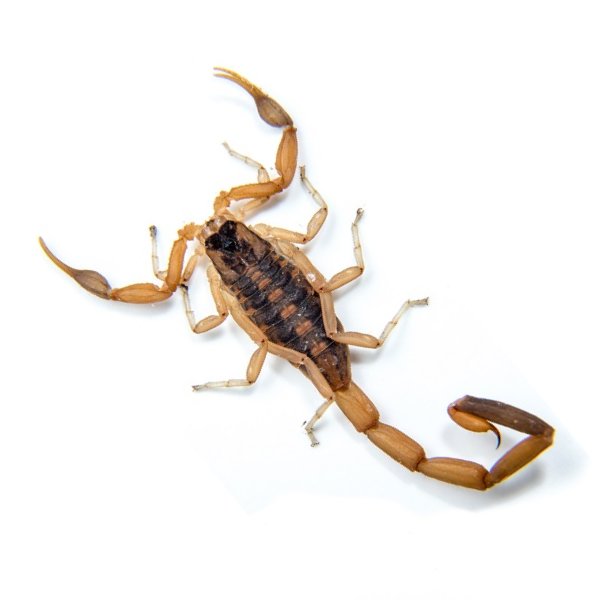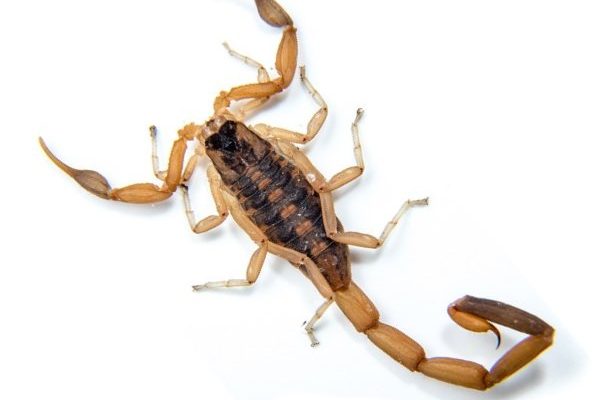
Imagine you’re walking in a warm, dry area, and you spot something moving on the ground that piques your curiosity. The striped bark scorpion, with its unique markings and features, might just be the intriguing creature you’re looking at. This guide is here to help you spot one, understand its behaviors, and appreciate its role in nature. So, grab a drink, and let’s dive in!
What Is the Striped Bark Scorpion?
The striped bark scorpion (scientific name: *Centruroides vittatus*) is commonly found in various regions across the United States and parts of Mexico. This species tends to favor dry, rocky areas, often hiding under loose bark or stones during the day. You might see them in forests, deserts, and even suburban gardens! They’re known for their thin, elongated bodies and distinctive color patterns.
Visually, the striped bark scorpion is usually a creamy yellow or light brown. However, its most recognizable feature is the dark stripes running down its back, giving it that “striped” look. These stripes can vary in intensity, sometimes appearing almost black. This coloration helps them blend into their natural habitat, making it easier for them to ambush prey while avoiding predators.
Understanding the behavior of the striped bark scorpion is important, too. They’re nocturnal creatures, meaning they come alive at night to hunt for food, which primarily consists of insects. If you ever spot one, it might be busily searching for dinner under the cover of darkness.
Physical Characteristics
Identifying a striped bark scorpion is all about knowing what to look for. Here are some defining physical characteristics:
- Coloration: As mentioned, the body is typically yellowish with darker stripes.
- Body Structure: They usually measure about 2.5 to 3 inches long. The bodies are slender and segmented.
- Pedipalps: These are the scorpion’s large pincers. In striped bark scorpions, they’re generally robust, helping them catch prey efficiently.
- Stinger: Their tail is curved and has a pronounced stinger at the end, which helps defend against threats.
When observing a striped bark scorpion, take a moment to appreciate its intricate design. The stripes aren’t just for show; they play a crucial role in camouflage. The ability to remain hidden while hunting or avoiding danger is vital for their survival.
Where Can You Find Them?
Knowing where to look can greatly increase your chances of spotting a striped bark scorpion. They thrive in hot, arid regions, but they can also be found in more humid environments. Here are some common habitats:
- Deserts: Many striped bark scorpions make their homes in sandy or rocky desert areas.
- Wooded Areas: They can often be found beneath tree bark, rocks, or leaf litter, especially in pine or oak forests.
- Residential Areas: Surprisingly, they sometimes venture into human spaces, especially in gardens or around foundations, looking for food.
You might be wondering about the best time to go scorpion spotting. This is often during the warmer months, particularly at night when they are most active. With a blacklight flashlight, you can spot them glowing in the dark due to the unique properties of their exoskeletons. It’s like finding hidden gems!
Behavior and Diet
The striped bark scorpion is more than just a pretty face with stripes; it has a distinct lifestyle and diet that makes it unique. Understanding these can help you appreciate what’s happening in its world.
As nocturnal hunters, striped bark scorpions are out and about while most of us are sleeping. They typically hunt insects, using their pincers to catch prey like crickets and other small bugs. They have a fascinating method of overpowering their prey by injecting venom through their stinger, which subdues the victim and makes it easier to eat.
Since they are relatively small creatures, their role in the ecosystem is significant. They help control insect populations, which can be beneficial in gardens or natural areas. If you manage to find one, remember that scorpions play their part in keeping the balance of nature in check, even if they might give you a little fright!
Safety Tips When Encountering Striped Bark Scorpions
Though striped bark scorpions are fascinating to observe, it’s crucial to remember they can be venomous. Here are some safety tips to keep in mind if you find yourself in their territory:
- Keep Your Distance: If you spot a scorpion, it’s best to just admire it from afar. They’re generally not aggressive unless provoked.
- Wear Protective Gear: If you’re hiking or exploring areas known for scorpions, wearing boots and long pants can protect you from accidental stings.
- Check Your Surroundings: Always be cautious when reaching into dark or hidden spaces where scorpions might be hiding.
That said, the sting of a striped bark scorpion isn’t usually life-threatening to healthy adults, but it can be painful and cause discomfort. If stung, it’s best to clean the area and seek medical advice.
Identifying the striped bark scorpion might seem like a daunting task, but with a little knowledge, you can become quite the expert. From their unique coloration to their nocturnal habits, these creatures play a vital role in our ecosystem. Remember to observe them respectfully, keeping safety in mind. Next time you’re out in nature, take a moment to appreciate the striped bark scorpion and its contributions to the wild. Happy scorpion spotting!

